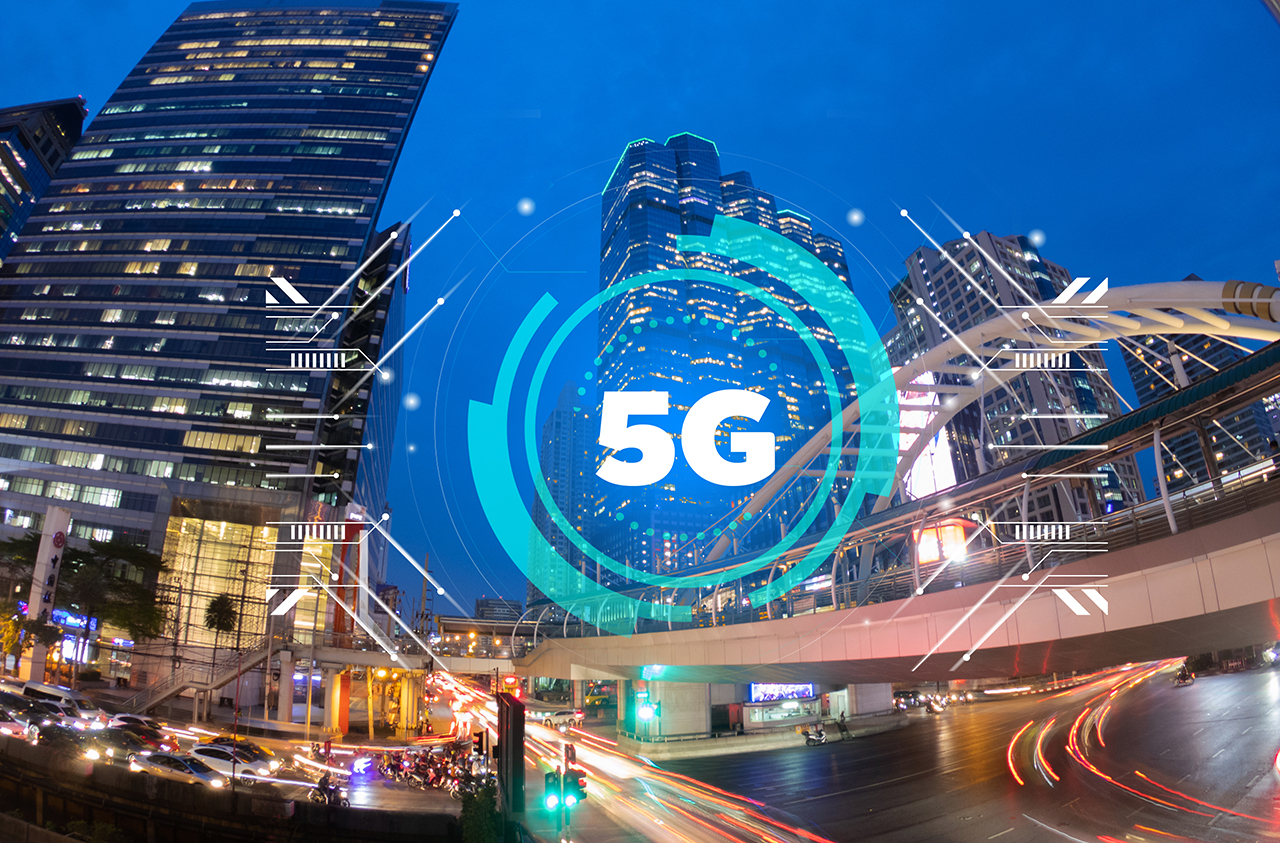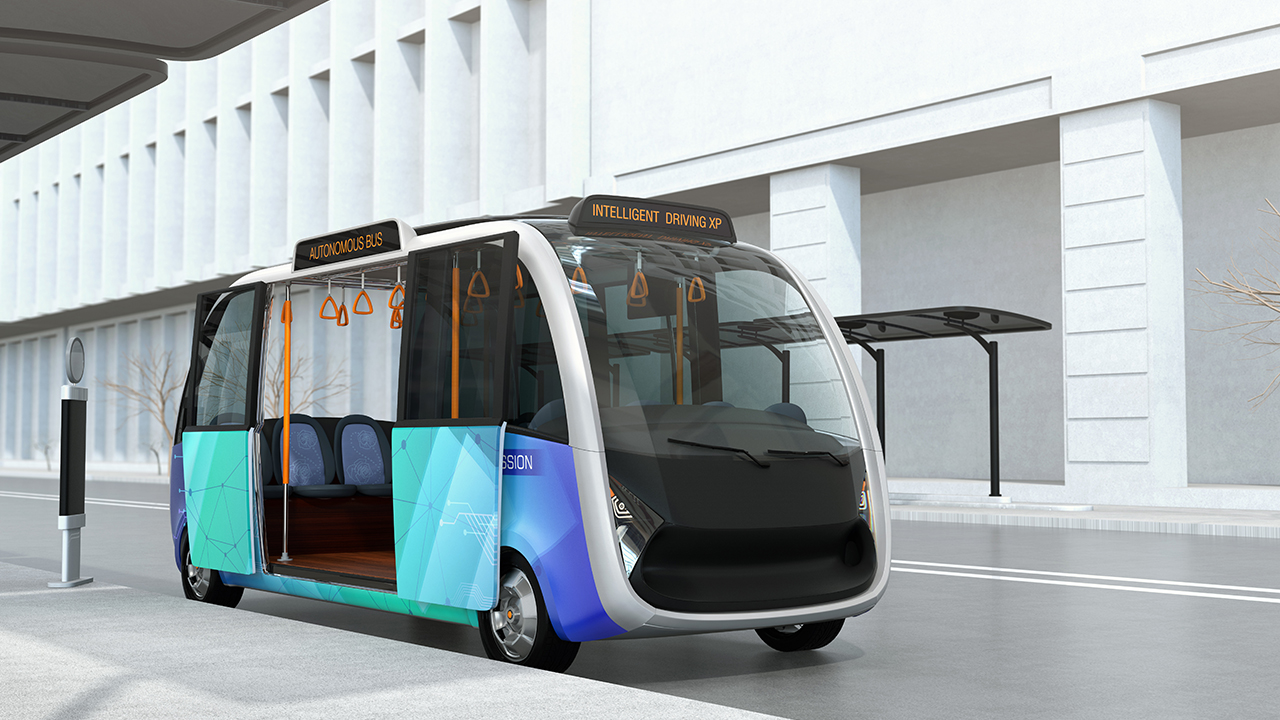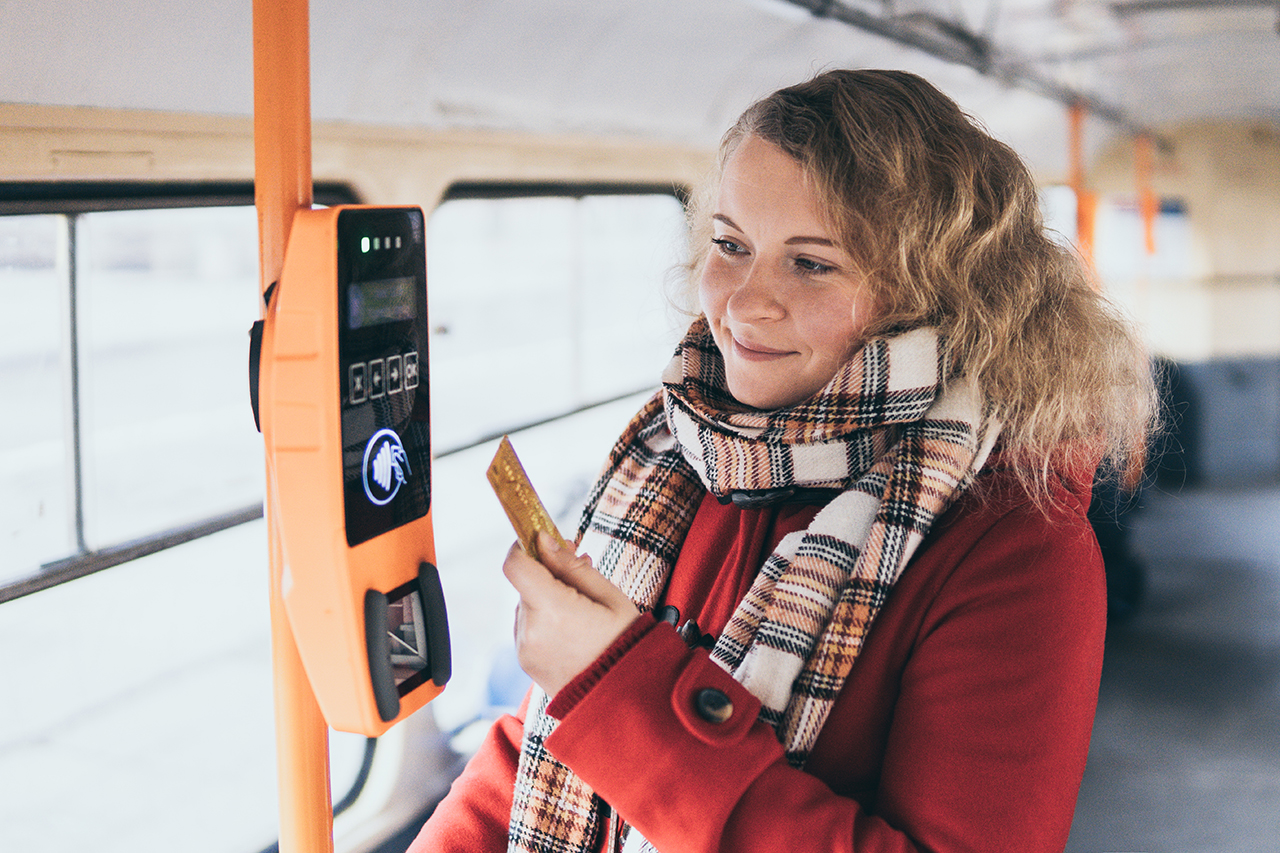Transportation systems are at an exciting inflection point, with new public transit technology driving unprecedented change. The growing prevalence of
smart, connected transportation technology has the potential to fundamentally change how people live, move and interact with mass transit systems.
Emerging public transportation technology offers potential solutions for overburdened city and metro traffic systems and a better, safer rider experience.
Technologies like
high-performance 5G mobile routers, artificial intelligence (AI), and the increasing availability of
edge computing solutions help transit agencies meet multiple goals. These advances help transit agencies simplify their infrastructure, manage all of their onboard and backhaul systems seamlessly and cost-effectively, and process system and security data for intelligent insights — all of which are already affecting the future of mobility.
How 5G, IoT and Edge Support New Public Transportation Technology

Technologies like 5G, the Internet of Things (IoT), 5G cellular devices and edge computing are poised to drastically transform public transportation, leaving traditional systems behind in terms of efficiency, flexibility and cost-effectiveness. While 5G networks provide fast connectivity for high-bandwidth data streams, the IoT allows remote, cost-effective data collection and monitoring for almost any device. And edge computing provides distributed compute power to access, process and act on insights from that data.
Public transit systems around the world can vary greatly, both in the technology they currently use and their approach to modernization. Some cities have the infrastructure, capacity and systems efficiency to transport millions of passengers each year while still lagging in their adoption of new and innovative technologies, as shown by various cities' results in the 2020 Urban Mobility Readiness Index.
Does a city's level of innovation matter if its public transit system is still operational? For example, while Madrid received a relatively low "innovation" score, the city still ranked in the top 10 for systems efficiency, and 16th for overall mobility readiness out of the 50 cities analyzed. However, urban transportation management teams today are finding that lack of investment in innovation could soon impair their cities from adopting new technologies and paving the way for future growth and viability.
The COVID-19 pandemic has highlighted some of these concerns, as transit agencies scramble to ensure public safety. Some of the key areas many aging systems are seeking to upgrade for a better and safer onboard experience include:
- Hands-free fare collection
- Improved on-board security with high-definition cameras
- Automatic passenger counting systems for public transport capacity management
- Reliable passenger Wi-Fi services
- Quality communications, digital signage and geo-location services
Related Content
Learn how Digi TX64 5G meets these requirements with one cost-effective solution in our blog post, 5G in Public Transit and Commercial Transportation Systems.
New Technologies That Will Transform Public Transit

With the increasing availability of 5G networks, public transit has the opportunity to intelligently deploy autonomous transportation and much more. With IoT devices connecting transportation technology, smart cities can develop sophisticated data-gathering and processing systems that deliver a better public transit experience.
Public transit systems can create an intelligent, connected system around innovative transportation technologies like:
- Driverless vehicles: While people may first think of autonomous cars and trucks, driverless vehicles may soon commonly include buses, trams, subway cars and even drone taxis. Using AI applications to route autonomous public transportation can reduce risk to human drivers, improve safety and efficiency and allow the coordinated rerouting of overlapping routes in case of an emergency.
- Zero-emission buses: As transit systems look for ways to improve systems efficiency and reduce carbon output, zero-emission buses are also becoming a priority. While electric buses may become most common, cities may also choose to invest in buses that run on hydrogen or compressed natural gas. And with the IoT, a fleet of zero-emission buses can be remotely monitored for performance issues so maintenance and repairs can be planned efficiently.
- Rapid transit: In addition to autonomous and zero-emission vehicles, urban transit systems are also looking into how to incorporate rapid transit into existing systems. While this term most often refers to rapid transit trains or hyperloop systems, this can also refer to rapid transit buses, which have dedicated traffic lanes and priority at intersections — something that smart traffic management can help manage.
- Smart traffic management: As smart cities become more common, the IT and communication infrastructure they require lends itself well to smart traffic management systems. These systems allow centralized traffic control, allowing transit authorities to intelligently manage traffic lights, cameras, emergency routing and public transit routes.
- Mobility-as-a-Service (MaaS) models: With MaaS, public transit systems can provide passenger apps that support mobile ticketing. Riders can plan a trip across the city using multimodal transport options, charting a path from bus, tram and subway routes to bikes and moving walkways. This gives people the ability to access and pay for different mobility options from one interface and pay portal, while IoT devices gather all the data that makes such a system possible.
Together, these innovative technologies can create future mobility ecosystems that provide intelligent, accessible and cost-effective transportation options. Now, many cities are faced with a challenge: how can they integrate these new technologies into existing — and often inconsistent and diverse — IT systems?
Download our Smart Transportation Management White Paper
How transit operators can deploy IoT transportation strategies for smarter, more efficient operations
Download PDF
The Current State of Public Transportation Technology

Over the last twenty years, public transportation has seemed to lag behind other segments of the transportation sector in its digital transformation. Often, what holds transit systems back from integrating new solutions is their existing IT infrastructure. Therefore the solutions for public transportation problems must have these key features:
- Provide the ability to reduce costs, e.g. through consolidation of disparate technologies
- Offer a highly compelling ROI, e.g. by reducing implementation and management costs
- Provide future-proofing to ensure that investment made today will last the test of time
Whether dealing with vendor lock-in or using a complicated variety of hardware, existing technology used in public transportation can be difficult to upgrade, integrate with new solutions, or replace. For this reason, Digi's transportation solutions are designed to meet multiple, complex transit system requirements, while being extremely quick-to-deploy, offering system-wide monitoring and management with Digi Remote Manager®, and enabling transit authorities to move to 5G — the network technology of the future.
Incentives to Improve Public Transportation Technology
Overall, public transportation is meant to serve several key functions that currently overloaded systems aren't always able to deliver. Efficient, accessible public transportation should:
- Provide basic mobility to people without other convenient or affordable options, democratizing access to employment, medical care and community resources.
- Improve economic viability of urban centers — both through employment opportunities in transit systems and safe, comfortable, convenient commuting options to work within the city.
- Promote public safety by reducing pollution, traffic congestion and the risk of accidents.
- Reduce a community's collective carbon footprint.
According to a study sponsored by the American Public Transportation Association (APTA), "failure to invest in public transportation infrastructure modernization... [could result] in a loss of $340 billion in cumulative business sales from 2017-2023." That's a strong incentive for public officials to prioritize initiatives to modernize infrastructure and adopt future public transportation technology.
Put in a more positive light, here are a few of the inspiring points made in the APTA article:
- Every $1 invested in public transportation generates $5 in economic returns.
- Every $1 billion invested in public transportation supports and creates approximately 50,000 jobs.
- Every $10 million in capital investment in public transportation yields $30 million in increased business sales.
- Every $10 million in operating investment yields $32 million in increased business sales.
- An estimated $39 billion of public transit expenditures flow into the private sector.
Investment in public transportation technology is therefore quite compelling!
The Challenges of Adopting New Public Transportation Technology

While 5G and IoT technology offer a promising avenue for improving public transportation and its IT infrastructure, there are several challenges that city planners and IT operations teams will have to overcome. Because of the diverse range of hardware and software solutions many public transit systems use, optimizing smart traffic management and other transit systems can prove difficult.
Many transportation authorities and agencies are likely using an array of applications for functions like capacity management, security, fare collection and vehicle travel metrics. Unifying controls or end-user access for these functions in a single interface can be expensive and time-consuming.
In many cases, completely replacing legacy IT infrastructure and applications is not feasible, especially given limited budgets for modernization efforts. However, by deploying consistent IoT devices — like Digi TX64 5G and Digi TX64 5G Rail — transit systems can use 5G to consistently monitor, integrate and manage data-driven functions across multiple platforms and applications.
How Smart Public Transportation Can Solve Existing Problems

According to the United Nations' projections, by 2050, 68% of people will live in urban areas. Without modernization, the public transit systems serving these areas will increasingly strain under the demand. While upgrading existing transportation technology may be challenging, 5G and IoT devices provide the chance to successfully make those changes now to prepare for the future of mobility.
With smart transportation, not only will urban populations have more reliable, accessible mobility options, but transit IT teams will benefit from having better visibility and control over platform security. Overall, 5G and IoT devices make it easier to implement smart technology — creating what the US Department of Transportation calls Intelligent Transportation Systems (ITS), which:
- Support automated traffic control and route planning, reducing the risk of accidents due to human error (whether through automated IT operations or the use of autonomous vehicles).
- Improve transportation efficiency. Transit agencies can use machine learning (ML) and AI models to analyze data from edge IoT devices and create and modify transport routes to decrease traffic, vehicle wear and tear and fuel usage. And, intelligent systems can plan the deployment of zero-emission buses, electric trams and autonomous vehicles to further reduce the system's carbon footprint.
- Enhance passenger experiences, by providing better reliable service and responsible information updates about transport availability, capacity and service outages.
The Outlook for Public Transit Technology

How quickly public transit changes on a global level depends on the ability of public sector stakeholders and experts to gain buy-in from key public policy leaders. In developed countries, transit agencies will have to overcome the challenges that legacy infrastructure poses while developing nations are integrating data-driven solutions into infrastructure that is still being built out.
As the 5G journey continues, milestones are key to realizing its value. In January 2022, in the midst of ongoing FAA and FCC and airline disputes, the coming online of a large amount of C-band gave many 5G mobile phone users a pleasant surprise upon doing speed tests. Although exciting theoretically and maybe for watching videos while in crowded spaces, the transformational bit is still on the horizon.
Digi is very excited about the control that will be brought by several advances:
- Network slicing, which enables multiple virtualized networks over a common multi-domain infrastructure
- Micropositioning (via sidelink and enhanced GNSS and other), and the awareness it will offer to vehicles, organizations, and individuals will allow for intelligent decision making throughout the smart cities of tomorrow
- The V2X ecosystem, which will bring the experience and awareness needed for precision control and safety on public transit systems and city streets
These will be topics of future blog posts as those technologies are released and made available through Digi product platforms.
On a day to basis, in 2022, most people won’t see these technologies in action. But there are a myriad of pilots for CV2X, driverless shuttles are popping up at large scale events, airports, and city trials. And driverless vehicles are already commonplace in industrial environments like mines, ports and warehouses. The transition to seeing driverless cars on every road may not happen for a number of years, but one thing is sure: it will be largely based on 5G (and future 6G) technology.
Many major cities are already on their journey to adopting smart public transportation and IoT devices. For example, in New York City, the transit agency manages 14,000 intersections via Digi Remote Manager® and a cellular connection to have a much closer view of the happenings in the city. This was done when upgrading the city's traffic management and communications.
As smart cities become more common, those cities that have leveraged 5G and IoT technology and prioritized digital transformation and innovation will have an advantage. To learn more about how Digi helps deliver IoT and smart transportation solutions that move transit systems forward, visit our Public Transit page. Or contact us to start a conversation about how Digi can support your public transportation connectivity needs.